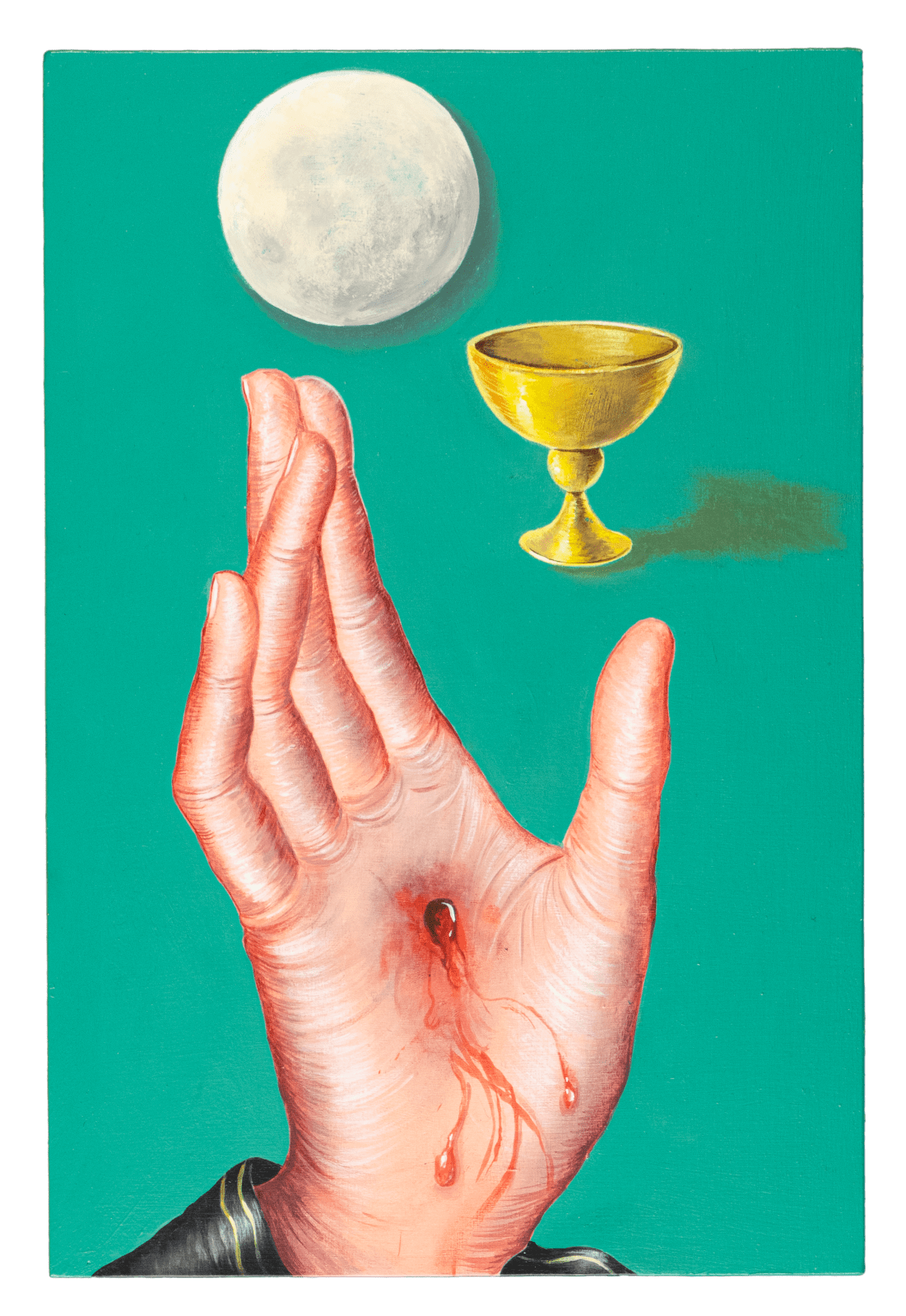Harald Erath (born in 1984 in Germany, works and lives in Zurich, Switzerland)
In Guten Händen 2, 2023
Egg tempera on wood
30 x 20 x 3 cm
Copyright La Gabrielle Fine Arts SA
CHF 2'880.-
Harald Erath grew up surrounded by a Catholic environment. From an early age, he was captivated by Medieval art, its symbols, and aesthetics. His work, and especially the present painting,...
Harald Erath grew up surrounded by a Catholic environment. From an early age, he was captivated by Medieval art, its symbols, and aesthetics. His work, and especially the present painting, reflects a strong influence from Late Medieval German art, with meticulous brushwork and exaggerated features (such as the treatment of the skin) reminiscent of that era. The painting's glossy finish enhances its vibrant colors, reminiscent of Medieval altarpieces, achieved through his use of tempera on wood - a technique from the Middle Ages.
The mystical quality of Medieval art inspires Harald Erath, prompting him to explore the emotions it evokes, even for those unfamiliar with Catholic iconography or for those who are, like him, non-religious. He observes that, despite a loss of understanding of religious symbols, they still evoke deep emotions as they continue to influence modern culture, resonating with viewers even when stripped of their original meanings.
Coming straight from the artist's studio (like In Guten Händen 1), the present painting encapsulates Harald Erath's thoughts on religion and symbolism. Removed from their original context, they invite reinterpretation. Elements like the hand with bloody hole, the poisoned chalice and the moon are free of any meanings; the viewer is free to assign his own meaning to the symbols depicted on the painting. For Harald Erath, the viewer's emotional response is always crucial, defining his art beyond his own intentions.
The mystical quality of Medieval art inspires Harald Erath, prompting him to explore the emotions it evokes, even for those unfamiliar with Catholic iconography or for those who are, like him, non-religious. He observes that, despite a loss of understanding of religious symbols, they still evoke deep emotions as they continue to influence modern culture, resonating with viewers even when stripped of their original meanings.
Coming straight from the artist's studio (like In Guten Händen 1), the present painting encapsulates Harald Erath's thoughts on religion and symbolism. Removed from their original context, they invite reinterpretation. Elements like the hand with bloody hole, the poisoned chalice and the moon are free of any meanings; the viewer is free to assign his own meaning to the symbols depicted on the painting. For Harald Erath, the viewer's emotional response is always crucial, defining his art beyond his own intentions.
